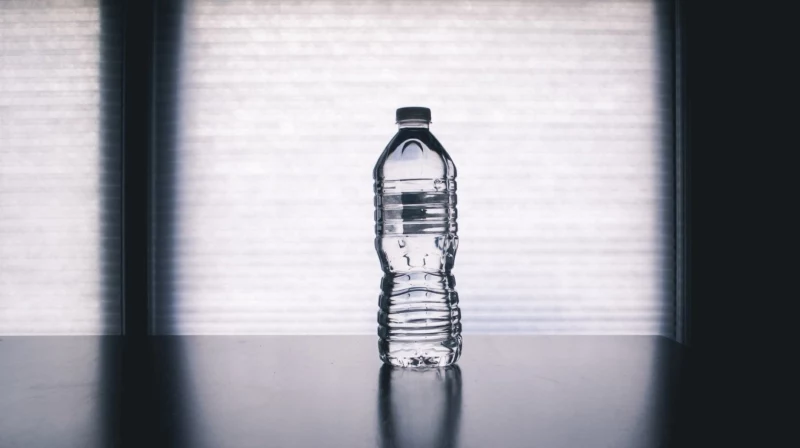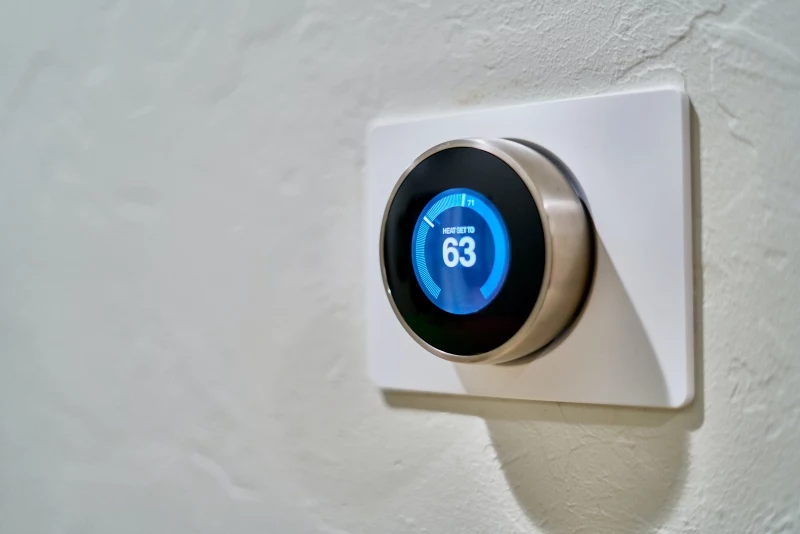Forget ‘Eco-Friendly’—Build a Home That Actually Works (And Saves You Money)
I’ve been building and fixing homes for over two decades, and I’ve seen every trend you can imagine. But here’s the one thing that never goes out of style: building a home that actually performs. This isn’t about slapping on some solar panels and calling it a day. It’s about creating a place that’s genuinely more comfortable, built to last, healthier for your family, and, honestly, way cheaper to run.
In this article
Some people call this an “eco-home.” I prefer to call it a high-performance home, because that’s what it is—a finely tuned machine for living that just works better on every single level.
And I didn’t learn this from a textbook. I learned it by fixing expensive mistakes, both my own and others’. I’ve been that guy in a sweltering attic with a smoke pencil, hunting down air leaks that were costing the homeowner a fortune. I’ve torn out entire walls of brand-new drywall ruined by moisture because the windows weren’t installed correctly. So this guide is built on that hard-won experience. We’re going to skip the fluffy stuff and dig into the core systems that make a real, measurable difference.

1. The Building Envelope: Your Home’s First and Best Defense
Before you even think about fancy thermostats or renewable energy, you have to get the building envelope right. This is the shell of your home—the walls, roof, foundation, windows, and doors that separate you from the outside world. A leaky, poorly insulated envelope is like wearing a fishnet jacket in a blizzard. You can crank the furnace to full blast, but you’re just burning cash to fight a losing battle.
A solid envelope keeps the heat where you want it: inside during the winter and outside during the summer. Simple as that.
Insulation and Air Sealing: The Unsung Heroes
Insulation’s only job is to resist the flow of heat, and its performance is measured by its R-value. A higher R-value means better resistance. But here’s a secret the industry doesn’t shout about: the R-value on the package is almost meaningless if the installation is sloppy. I’ve seen so many jobs where expensive insulation is crammed around pipes or has gaps, creating “thermal bridges” where heat just streams out. This can slash the effective R-value in half.

But insulation alone isn’t enough. Air sealing is its crucial partner. A house can have fantastic insulation and still feel drafty and cost a ton to heat because of tiny air leaks. These usually happen where different materials meet—where the walls meet the floor, around windows and doors, and any place a pipe or wire pokes through. To find these leaks, pros use a tool called a blower door. It depressurizes the house and lets us see exactly where the leaks are with a thermal camera. The test gives us a score called Air Changes per Hour (ACH).
Good to know: A typical new home might have a score of 3.0 ACH. That’s not bad, but a true high-performance home is aiming for 1.5 ACH or even less. For context, some drafty old houses I’ve tested started at 9.0 ACH or higher! Getting a blower door test is one of the best investments you can make, usually costing between $300 and $500, and it gives you a precise roadmap for improvements.

Let’s Talk Insulation Materials
You’ve got options, and they aren’t all created equal. There’s no table for this, just real-world advice:
- Mineral Wool: This is often my go-to over standard fiberglass. It has a similar R-value but brings more to the table. It’s much more fire-resistant and does a way better job at dampening sound. The biggest plus? It doesn’t absorb water. If a small leak ever happens, it won’t turn into a moldy sponge inside your walls. It costs a bit more than fiberglass, but the peace of mind is worth it.
- Spray Foam: For tricky spots like the rim joist (that’s the spot where your house framing rests on the foundation), closed-cell spray foam is a powerhouse. It insulates, air seals, and acts as a vapor barrier all in one shot. Heads up! This is absolutely NOT a DIY job. If the chemicals are mixed or applied wrong, the off-gassing can be a serious health hazard. Always hire a certified pro and ask them, “Can I see your certification for this specific product, and what’s your ventilation plan during and after installation?”
- Cellulose: This is a fantastic option for retrofitting old homes. It’s made from recycled paper and is blown into wall cavities under pressure, so it fills every single nook and cranny. It’s a great way to tighten up an old building without tearing it apart.

Your Weekend Project: The $60 Air-Sealing Blitz
Feeling overwhelmed? Don’t be. Here’s something you can do this weekend to feel an immediate difference. Go to any hardware store like Lowe’s or Home Depot and grab this stuff:
- A tube of acoustic sealant (about $8)
- A can of low-expansion spray foam for windows and doors (about $10)
- A pack of foam gaskets for your electrical outlets and switches (about $12 for a multi-pack)
- A roll of quality weatherstripping for your doors (about $15)
For a total cost of around $50-$60, you can spend a Saturday sealing the most common leaky spots: the gap between the baseboard and the floor, around window and door trim, and behind the cover plates of every outlet and switch on your exterior walls. It’s the best bang-for-your-buck improvement you can make.
Windows and Doors: The Holes in Your Armor
Let’s be real, windows are holes in your perfectly insulated wall. But modern windows are amazing pieces of tech. You just have to know what to look for on the label. Two numbers are critical:

- U-factor: This measures how well a window stops heat from escaping. Think of it as the opposite of R-value, so a LOWER number is better. In a cold climate, I’d look for a U-factor of 0.25 or less.
- Solar Heat Gain Coefficient (SHGC): This measures how much heat from the sun the window lets in. In a hot climate like Arizona, you want a very low SHGC (maybe 0.22) to slash cooling costs. But in a cold climate, you might actually want a slightly higher SHGC on your south-facing windows to get some free solar heating in the winter.
The frame material matters, too. Vinyl is the budget choice, but I’ve seen cheap ones warp or fail in under 10 years. Wood is a classic insulator but requires a lot of maintenance. My personal preference for performance and durability is fiberglass. It expands and contracts at almost the same rate as the glass, which means less stress on the seals and a much longer lifespan. Expect to pay 20-40% more for fiberglass than vinyl, but you get what you pay for.
A lesson from the field: The best window in the world is useless if it’s installed poorly. I was once called to a multi-million-dollar home where every single window was leaking. The builder used top-tier windows, but the crew didn’t flash them correctly. The repair bill was astronomical. Before you hire anyone, ask them, “Can you walk me through your exact process for integrating the window flashing with the weather-resistive barrier?” If they stumble or give you a vague answer, run.
2. High-Efficiency Systems: The Engine of the Home
Once your home’s envelope is tight, you can use smaller, more efficient mechanical systems. You don’t need a giant furnace to heat a well-sealed home. This is where the long-term savings really kick in.
HVAC: Size Matters (A Lot)
Most HVAC contractors use outdated rules of thumb to size a system, which almost always results in a unit that’s too big. An oversized air conditioner will blast cold air and shut off quickly, but it won’t run long enough to remove humidity. That leaves you with that cold, clammy feeling. It’s awful.
A true professional will perform what’s called a “Manual J load calculation.” It’s a detailed analysis of your home’s specific features to determine the exact heating and cooling power you need. Always ask a potential contractor: “Do you perform a Manual J calculation to size your systems?” If the answer is anything but an enthusiastic “yes,” find someone else.
By the way, you should definitely look into modern cold-climate heat pumps. They used to be useless in freezing weather, but the new models are incredibly efficient, moving heat instead of creating it, even when it’s well below freezing outside.
Renewable Energy: Taking Control
Solar panels are a big step, but they’re more attainable than ever. A good installer will analyze your last year of electric bills to design a system that meets your specific needs. The total cost can range from $15,000 to $25,000 or more before federal tax credits and local incentives, but the payback period is often shorter than you think.
And battery storage is becoming a game-changer. A home battery stores your excess solar power for use at night or during a blackout. It’s a serious investment, but it gives you true energy independence. Just remember, this is not a DIY project. You’re dealing with high-voltage electricity and structural roof loads. Leave it to the licensed pros.
3. Water and Health: What You Drink and Breathe
A high-performance home is also a healthy one. That means managing your water and your indoor air quality.
Water Filtration: Test Before You Treat
Please, do not buy a water filter until you’ve tested your water. You can get a basic kit at a hardware store, but for the full picture, send a sample to a state-certified lab. It’ll cost you $150 or more, but it’s the only way to know what you’re actually dealing with, whether it’s lead, bacteria, or just hard water minerals. I once had a client who spent nearly $3,000 on a complex reverse osmosis system because of general worries. A simple water test later revealed their only issue was a slight chlorine taste from the city. A $200 whole-house carbon filter would have solved their problem perfectly. Test first!
Healthy Materials and Fresh Air
Indoor air can be surprisingly polluted, often from the materials in our homes off-gassing chemicals called Volatile Organic Compounds (VOCs). These come from paints, adhesives, carpets, and cheap furniture.
When you’re choosing materials, look for these things:
- Paints: Choose low-VOC or zero-VOC options. Look for a Greenguard Gold certification, which means it has been tested for low chemical emissions.
- Flooring: Solid hardwood, natural linoleum (not vinyl!), and tile are fantastic. If you go with engineered wood, make sure it has a FloorScore certification.
- Cabinets: Avoid particleboard that uses formaldehyde-based glues. Go for solid wood or plywood made with formaldehyde-free adhesives.
Finally, remember that a tight home needs to breathe. But you want to control how it breathes. A system called a Heat Recovery Ventilator (HRV) or Energy Recovery Ventilator (ERV) is the solution. It constantly pulls stale, polluted air out while bringing in fresh, filtered air from outside. And it does this while transferring the heat from the outgoing air to the incoming air, so you don’t waste energy. It’s the key to having a home that is both airtight and full of fresh, healthy air.
Building a home like this is a journey, not a destination. It takes planning and a focus on quality over quick fixes. But by focusing on a rock-solid envelope, right-sized systems, and healthy materials, you end up with more than just a house. You get a home that takes care of you for years to come.










